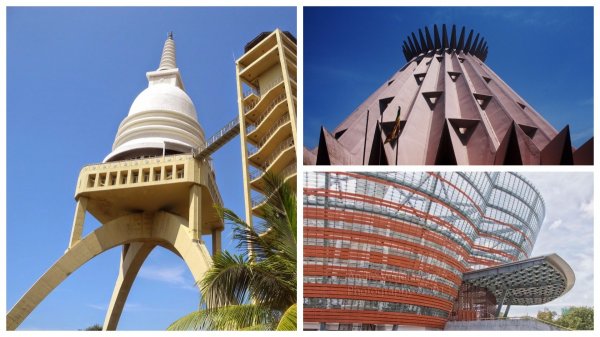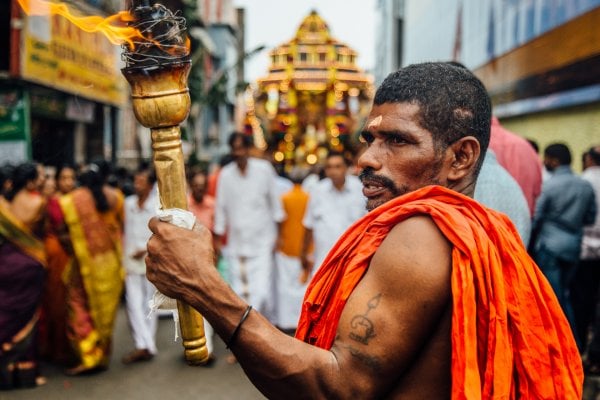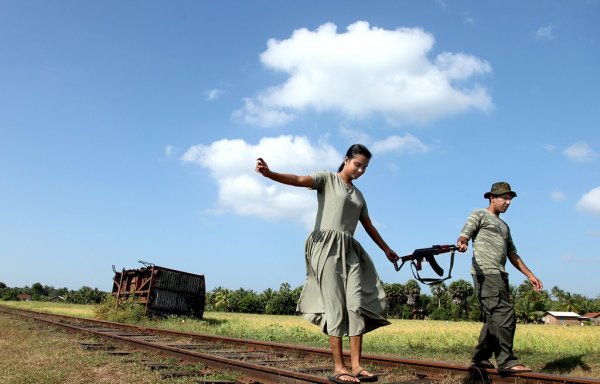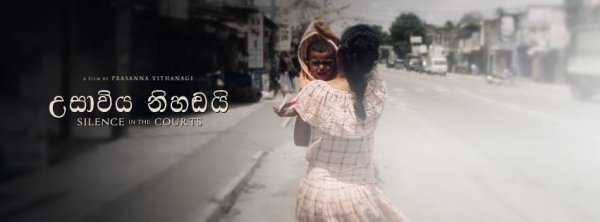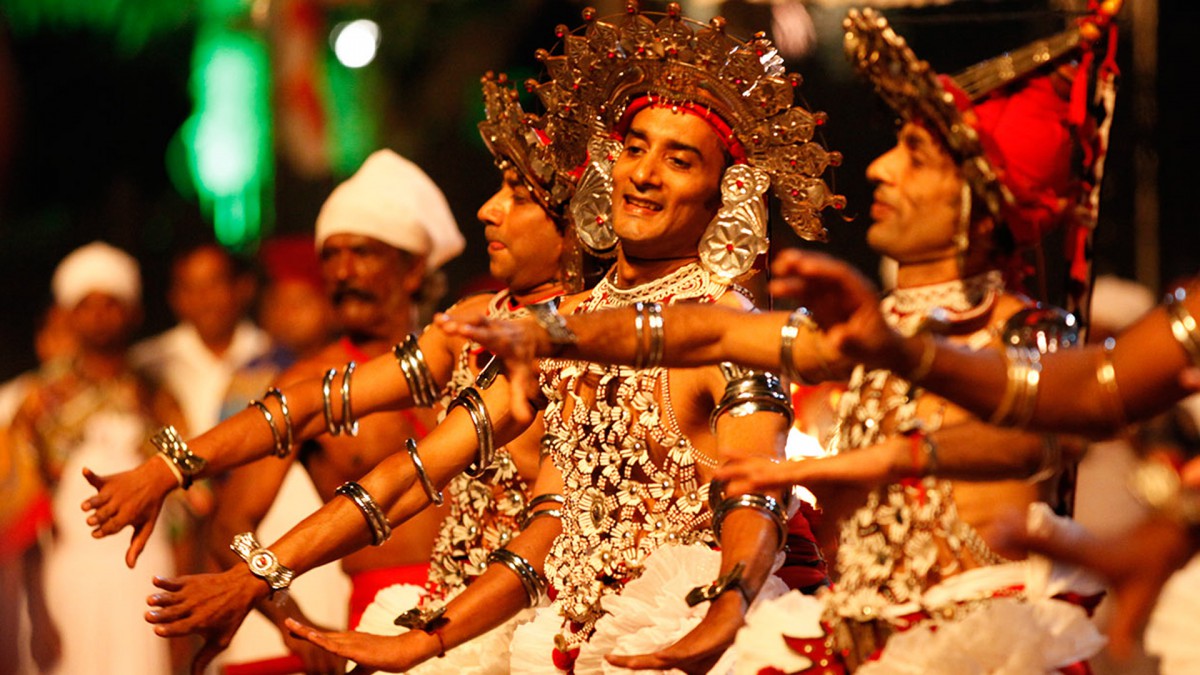
Be it the Kandy Perahera, an Avurudhu celebration, or a traditional Buddhist wedding, almost every social, cultural or religious occasion in Sri Lanka highlights different forms and styles of dance that are indigenous to the country. For both ritualistic and aesthetic reasons, dance plays an important role in Sri Lanka’s culture.
According to W. B. Makulloluwa’s book Dances of Sri Lanka, the traditions of classical dance in our country were originally influenced by the classical Bharatha Natyam and folk dances of South India. However, over the past 2500 years, they have been influenced by Sinhalese culture and evolved into the dances of the present day. The different styles of dancing unique to Sri Lanka include the three main forms of Sinhalese classical dance—Kandyan dance, Low Country dance and Sabaragamuwa dance—as well as folk dances.
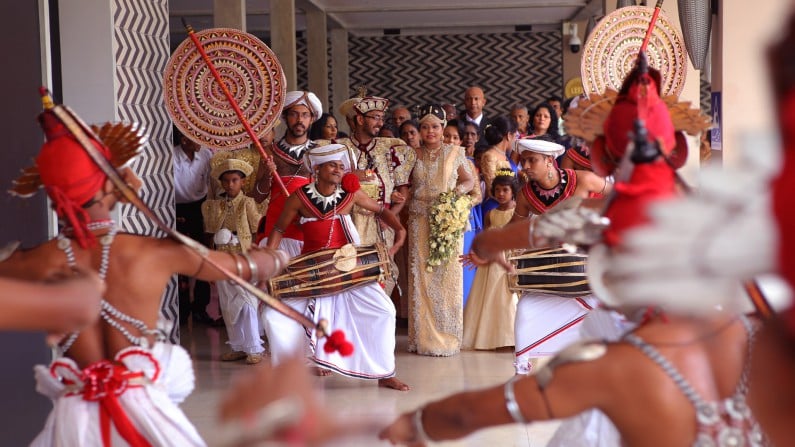
Kandyan dancers performing at a wedding ceremony. Image courtesy yeah.lk/waruna-mangala-mandiraya
Dances of Sri Lanka states that Kandyan dance (Uda Rata Natum) is the “foremost and most widely practiced dance form”* in Sri Lanka. This tradition of dance originated in the Kandyan Kingdom and at present, there are five different dances that make up the Kandyan tradition of dancing—the ves dance, the naiyandi dance, the uddekki dance, the pantheru dance and the wannam.
The Ves Dance
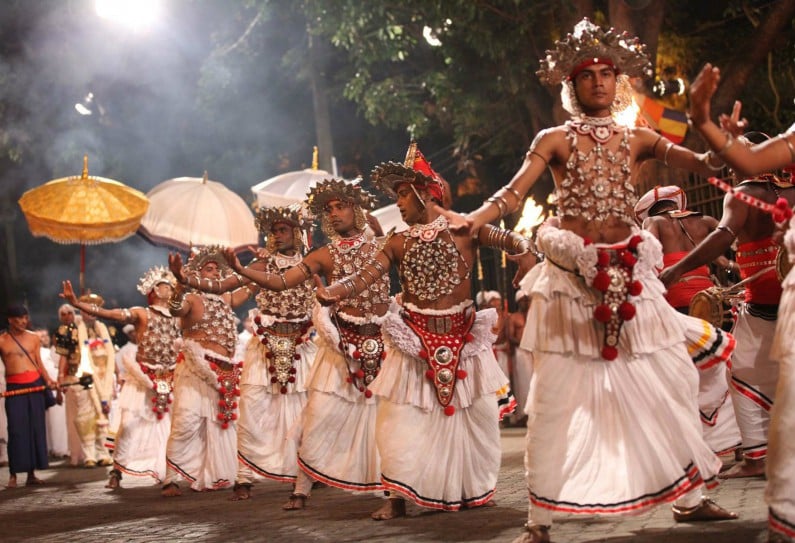
The term ves refers to the sacred headgear worn by these dancers. Image courtesy percyroxas.wordpress.com
The ves dance is the most popular form of Kandyan dance and originates from the Kohomba Kankariya, also known as the Kohomba Yakuma—an ancient ritual of purification.
Even today, the dance is performed during religious festivities and at auspicious moments. It is performed only by males, and the elaborately costumed ves dancer is the iconic Kandyan dancer.
The term ves refers to the sacred headgear worn by these dancers, which is believed to have belonged to the deity Kohomba. It is a semi-circular crown-like ornament made of discs of silver-plated wood fixed to one another. A border of silver Bo leaves borders the edge of the headdress and it is secured on the head with an embroidered ribbon. This headdress is never worn without the accompanying costume, which is also adorned with silver-plated wooden discs.
One of the main features of this dance—aside from the costume—is the intricate rhythm provided by the geta bera drums and the little cymbals called thalampata.
The Pantheru Dance
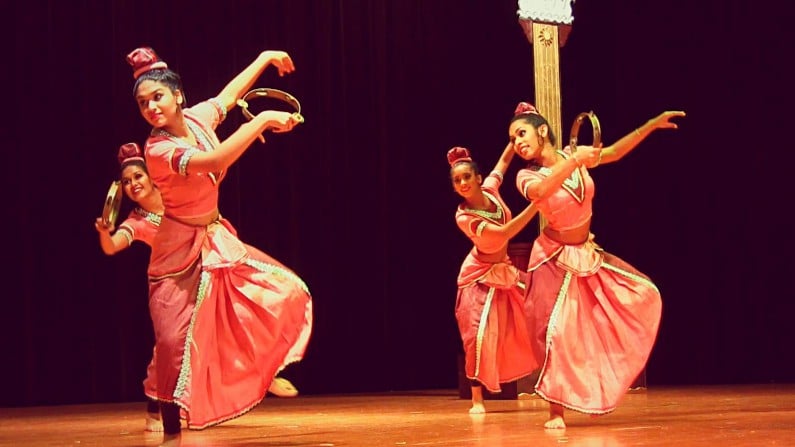
The pantheru dance is performed to venerate the goddess Pattini. Image courtesy youtube.com/wvideopro
The pantheruwa is a brass ring about ten inches in diameter, with jingling brass discs fixed on to its frame—much like a tambourine—and it is modelled after a weapon called the halamba vallala which is said to have belonged to the goddess Pattini.
This dance is performed in veneration to the goddess, and while dancing the pantheru dancers use the pantheruwa as accompaniment to their songs and dance movements. The dancers dress in plain white cloths wrapped around their waists, with a headdress made of similar white cloth wrapped around their heads. Sometimes they wear an ornamental breastplate made of coloured wooden beads called an aulhara around their chests.
The Uddekki Dance
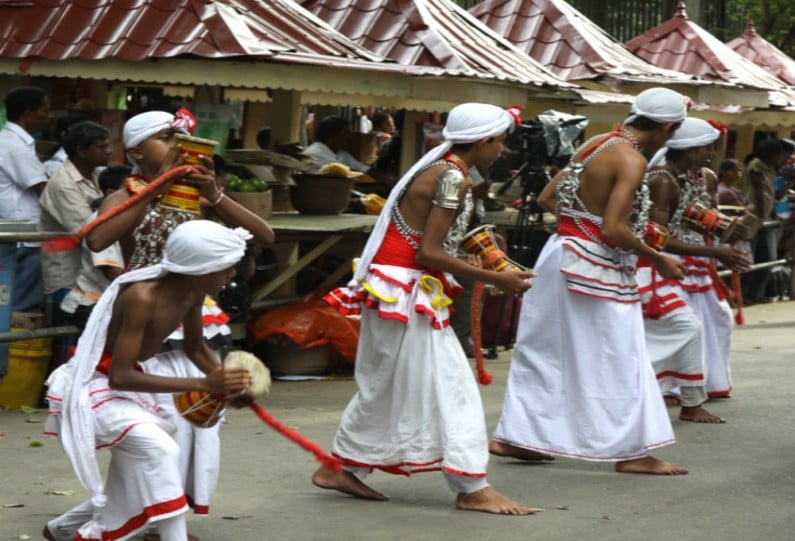
The drum known as the udekki is said to have been gifted by the gods. Image courtesy flickr.com
This dance is performed while playing the lacquered, hourglass shaped drum called the udekki, thus giving it its name.
According to folk religion, it is believed that the drum was gifted to the people by the gods. It is said to have been constructed according to the instructions of the god Sakra, while the skins of the two faces of the drum and the sound are believed to have been given by the gods Ishwara and Vishnu, respectively.
The costume worn by the Udekki dancers is also similar to that worn by the Pantheru dancers.
The Naiyandi Dance

Traditionally this dance was performed during the initial preparations of the Kohomba Kankariya festival. Image courtesy flickr.com
The naiyandi dance was traditionally performed during the initial preparations of the Kohomba Kankariya festival when the oil lamps were lit and the food offerings were prepared. Nowadays, it is performed in the Maha Vishnu and Kataragama temples during ceremonial occasions.
The dancers wear a white cloth and white turban with beadwork decorations on their chests, brass shoulder plates, anklets and other accessories.
The Wannam Dances
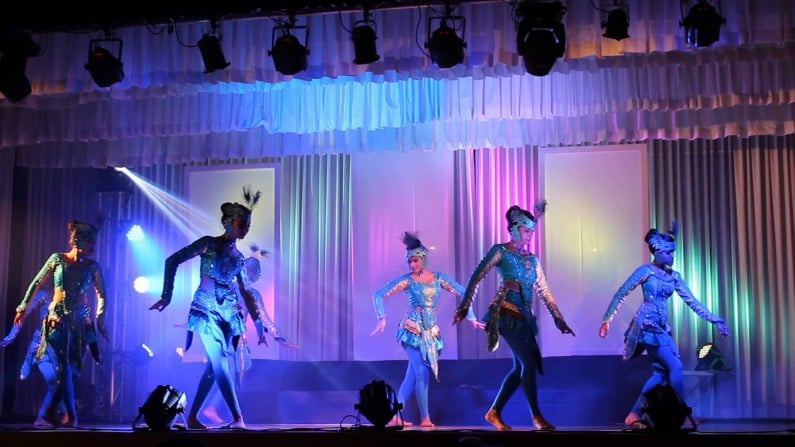
The mayura wannama. Image courtesy worldwide.chat
The latter style of dancing was introduced during the Nayakkar regime of the Kandyan Kingdom; South Indian music and dance influenced the Kandyan dance tradition during this dynasty.
The word wannam comes from the Sinhala word varnana (praise), and the dance was first produced in the early Kandyan Kingdom. A wannama is a descriptive stanza related to a particular theme or subject and a dance is based on this wannama.
The attributes of such a dance depend on the theme of the said stanza and at present there are 18 classical wannam spanning a variety of popular themes and subjects such as nature, history, legends, religion, folk art and sacred beliefs. Historically, these classical wannam were only sung, but over time they were adapted into dances.
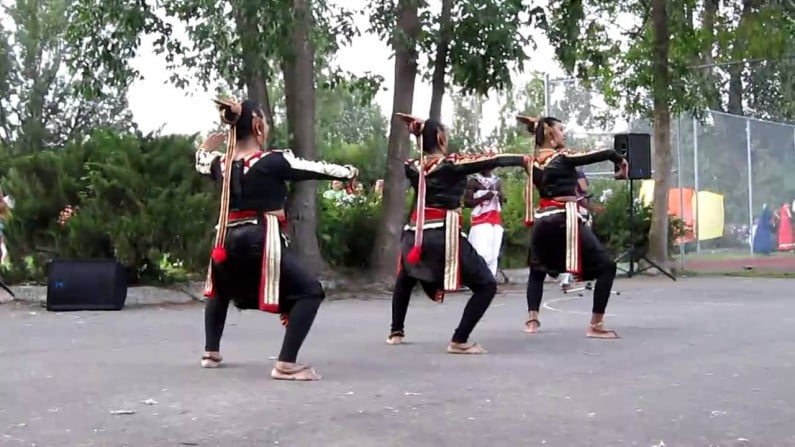
The gajaga wannama performed at the Lumiere Festival in Ottawa. Image courtesy youtube.com/Sakwithi Arts Ensemble
These were the titles of the eighteen classical wannams: gajaga (elephant), thuranga (horse), mayura (peacock), gahaka (conch shell), uranga (reptiles ), musaladi (hare),ukussa (eagle), vairodi (precious stone), hanuma (monkey), savula (rooster), sinharaja (lion), naga (cobra), kirala (red-wattled lapwing), eeradi (arrow), Surapathi (praise for the goddess Surapathi), Ganapathi (praise for the god Ganapathi), uduwara (praise for the majesty of the king) and asadrusha (praise for Lord Buddha). Later, the wannam of the samanala wannama (butterfly), bo wannama (the sacred bo tree at Anuradhapura), and hansa wannama (swan) were added to the selection.
All of the wannam dances consisted of seven components, but their pace depended on the kavi (verses), that were vocalised by the dancers, and also the subject matter. For example, the dance of the mayura wannama would be slow and graceful, in order to depict the behaviour and nature of the peacock, but the movements and rhythms of the dance of the gajaga wannama would be quite different.
From the Hill Country To The Whole Country
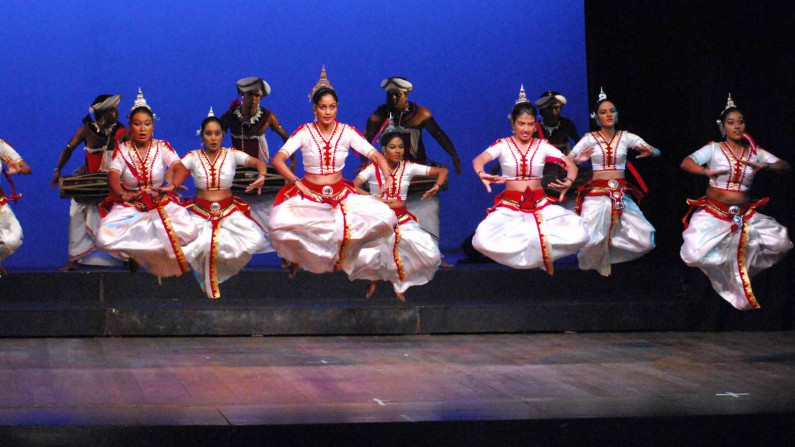
Private dance academies are a few of the institutions that promote the teaching of traditional Kandyan dance. Image courtesy vishaschoolofdance.com
Because of the democratisation dancing in Sri Lanka, it is not out of the ordinary to see people in places other than the Hill Country study and perform Kandyan dance. Private dance academies and institutes, founded and headed by veteran dancers such as Visha Manohari De Silva, are some of the institutions that are at the forefront of promoting traditional Kandyan dance.
A former dancer of the prestigious Chitrasena Dance Troupe, Visha established her school of Dance in 1984 in Dehiwala. She teaches and trains children as young as three. Some of her students are also employed, either in the field of teaching dance or in other fields.
Becoming a professional dancer or dancing teacher may not seem like an ideal career choice, but when speaking to Roar, Visha admitted that many of her students have aspired to become professionals in this field. Some have even been awarded teaching internships at reputed international schools in India, while others have travelled to countries like Korea and Japan to perform at cultural pageants and concerts.
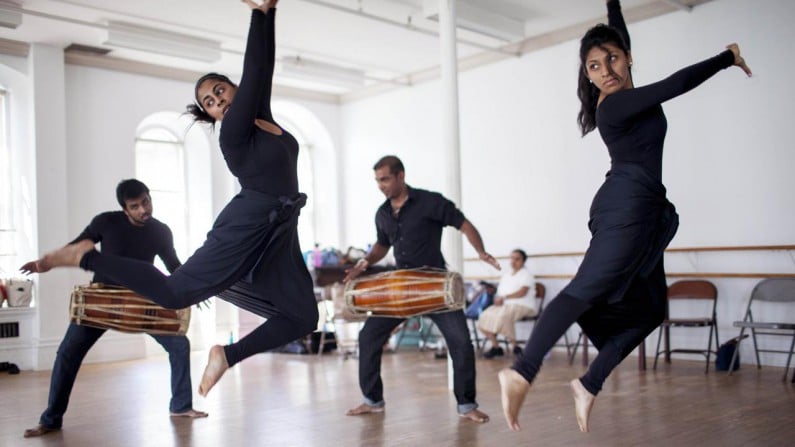
The National Women’s Dance Troupe of Sri Lanka in Staten Island, USA prepare for an upcoming performance of Kandyan dance. Image courtesy wsj.com
Visha also noted that the Ministry of Cultural Affairs supports senior dance teachers such as herself. She added that the Ministry is also involved in encouraging young dancers through cultural pageants and dance competitions which are open to dancers of all ages. With initiatives such as these, there is no doubt that the Kandyan styles of dance will be preserved for future generations of Sri Lankans.
* Dances of Sri Lanka by W. B. Makulloluwa (1978). Department of Cultural Affairs
Featured Image courtesy hotelnasevana.lk


